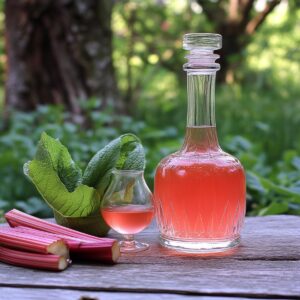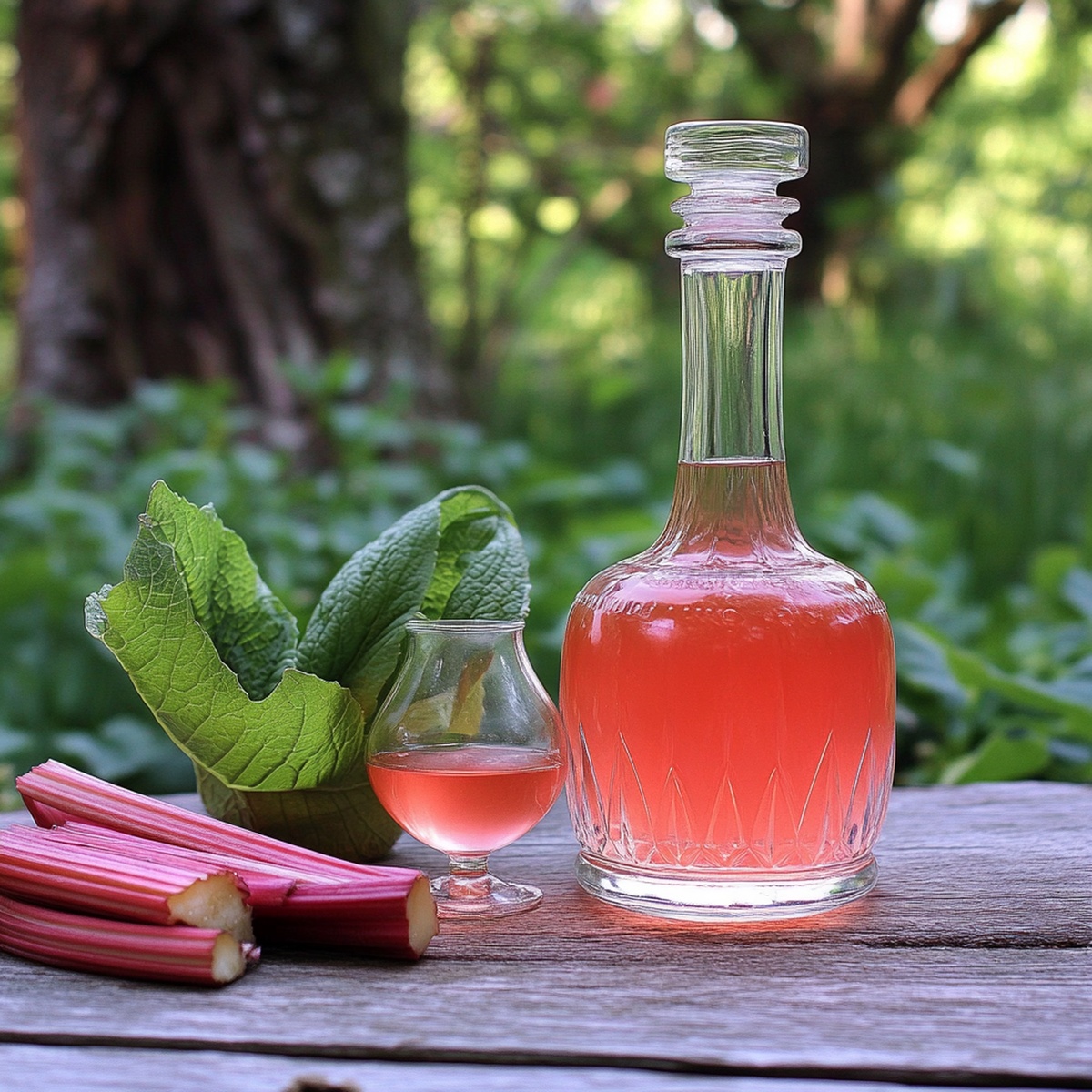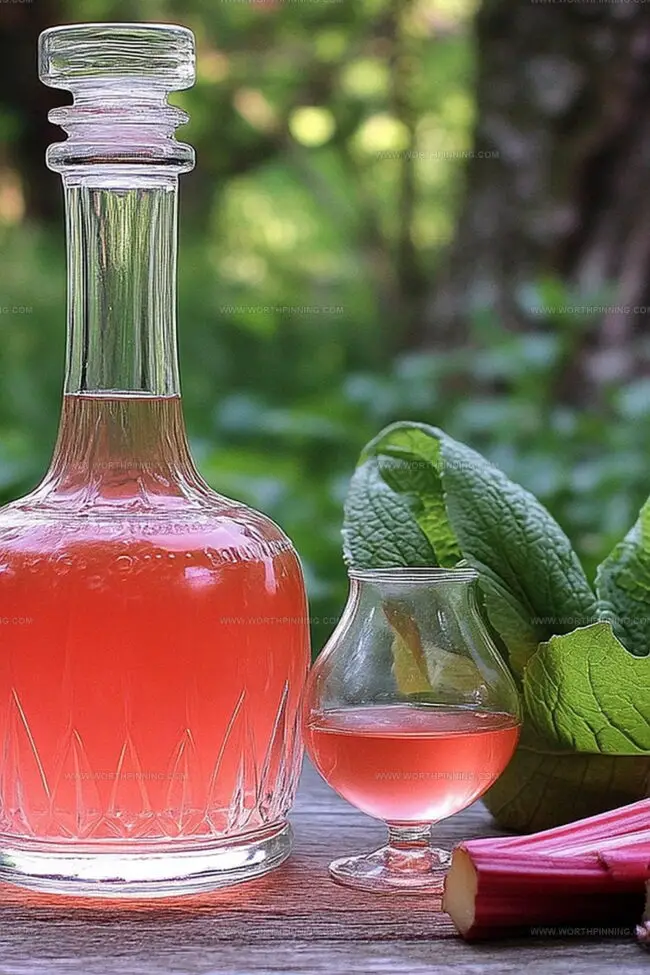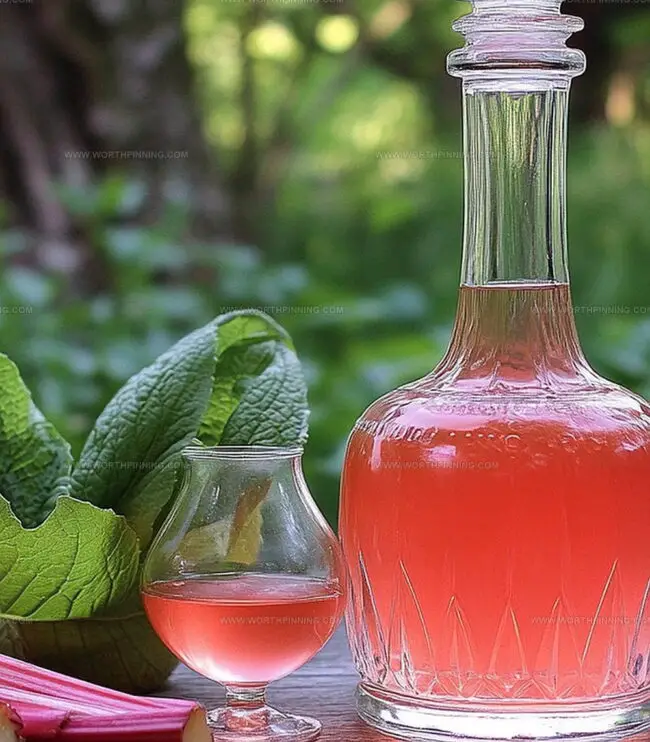Tangy Homemade Rhubarb Liqueur Recipe for Summer Sipping
Crafting a homemade rhubarb liqueur brings unexpected magic to your cocktail repertoire.
Sweet-tart stalks burst with vibrant flavor when steeped in high-quality spirits.
Summer garden abundance transforms into an elegant libation with minimal effort.
Gardeners and mixology enthusiasts will appreciate this simple preservation technique.
Botanical infusions capture seasonal essence better than store-bought alternatives.
Crimson liquid promises sophisticated sipping experiences that impress even discerning palates.
Rich amber hues and complex notes make this liqueur a conversation starter at any gathering.
Let’s unlock the delicious potential of rhubarb’s hidden charm.
Rhubarb Liqueur Brings Tang and Warmth
Rhubarb Liqueur Begins with These Ingredients
Fruit Base:Sweeteners:Alcohol and Enhancers:How to Make Rhubarb Liqueur at Home
Step 1: Chop and Mix Rhubarb
Grab a large glass jar and toss in freshly chopped rhubarb. Sprinkle sugar over the vibrant pink pieces. If you’re feeling zesty, add some lemon zest for an extra flavor punch. Give everything a good mix to wake up those delicious fruit juices.
Step 2: Awaken the Flavors
Cover the jar and let it sit at room temperature for a full day. During this time, the sugar will work its magic, drawing out the rhubarb’s natural sweetness and creating a juicy syrup.
Step 3: Introduce the Vodka
After 24 hours, pour in smooth vodka. Splash in some vanilla extract if you want a deeper, richer taste. Stir the mixture thoroughly to combine all the ingredients.
Step 4: Infuse and Develop Flavor
Seal the jar tightly and tuck it away in a cool, dark spot. Let the liqueur rest and develop its character for 1 to 2 weeks. Every day or two, give the jar a gentle shake to help the flavors mingle and dance.
Step 5: Strain and Purify
When the infusion is complete, strain the liquid through a fine mesh strainer or cheesecloth. This will remove all the fruit bits and create a smooth, crystal-clear liqueur.
Step 6: Store and Chill
Transfer the liqueur to a clean bottle or jar. Store it in the refrigerator or a cool, dark place. For the best sipping experience, chill thoroughly before serving.
Tips for a Bold and Balanced Rhubarb Liqueur
Store Rhubarb Liqueur for Sipping Anytime
Pair Rhubarb Liqueur with These Flavor Matches
Fresh Ways to Remix Rhubarb Liqueur
Rhubarb Liqueur FAQs for New Makers
Yes, the alcohol content depends on the vodka you choose. Most homemade versions range between 20-30% alcohol by volume, similar to commercial fruit liqueurs.
Absolutely! White rum, gin, or even clear grain alcohol work great. Each will give a slightly different flavor profile to your rhubarb liqueur.
When stored properly in a sealed bottle in the refrigerator, your liqueur can last up to 6 months. The high sugar content and alcohol help preserve it effectively.
Fresh rhubarb is best, but you can use frozen rhubarb too. Just thaw and drain excess liquid before starting the infusion process.
Print
Rhubarb Liqueur Recipe
- Total Time: 20 minutes
- Yield: 10 1x
Description
Rhubarb liqueur brings spring’s tangy magic into a smooth, enchanting spirit that dances between tart and sweet. Craft this rosy libation to elevate cocktails or sip solo, creating a delightful homemade treasure you’ll savor with pure pleasure.
Ingredients
Primary Ingredients:
- 4 cups (approx. 1 pound/454 grams) chopped fresh rhubarb
- 2 cups (473 milliliters) vodka
- 1 ½ cups (300 grams) granulated sugar
Flavor Enhancers:
- 1 teaspoon vanilla extract
- Zest of 1 lemon
Instructions
- Select a spacious glass vessel with a secure lid, then tumble freshly cut rhubarb segments alongside granulated sweetener and fragrant citrus peels.
- Gently agitate the mixture, ensuring even distribution, then blanket with lid and permit natural juice extraction at ambient temperature for one complete solar cycle.
- Following the maceration period, introduce premium neutral spirit and aromatic vanilla essence, stirring thoroughly to integrate all components.
- Hermetically seal the container and relocate to a shadowy, temperate environment, allowing liquidalchemy to transform flavors over seven to fourteen days.
- Periodically caress the vessel, rotating contents to promote consistent flavor development and ingredient interaction.
- When infusion reaches optimal depth, meticulously filter liquid through ultra-fine textile or precision mesh, capturing pure essence while separating solids.
- Transfer luminous crimson elixir into pristine glass receptacle, selecting storage location with consistently cool temperature – refrigeration recommended for prolonged preservation.
- Prior to serving, ensure thorough chilling to enhance sensory experience and maximize flavor complexity.
Notes
- Choose firm, bright red rhubarb stalks for the most vibrant color and intense flavor, avoiding any wilted or soft pieces.
- Remove all leaves from rhubarb before chopping, as they are toxic and should never be used in the recipe.
- Adjust sugar quantity based on rhubarb’s tartness; start with less and taste during infusion to control sweetness.
- Use high-quality vodka for smoother, cleaner liqueur taste, preferring mid-range brands with neutral profiles.
- Prep Time: 20 minutes (excluding infusion time)
- Cook Time: 0 minutes
- Category: Drinks, Cocktails
- Method: Blending
- Cuisine: French
Nutrition
- Serving Size: 10
- Calories: 80
- Sugar: 12 g
- Sodium: 1 mg
- Fat: 0 g
- Saturated Fat: 0 g
- Unsaturated Fat: 0 g
- Trans Fat: 0 g
- Carbohydrates: 20 g
- Fiber: 2 g
- Protein: 1 g
- Cholesterol: 0 mg




Ethan Miller
Founder & Lead Content Writer
Expertise
Education
Portland Community College
Culinary Institute of the Pacific
Ethan’s culinary journey began in his grandmother’s kitchen, where he first learned to play with flavors and ingredients. With formal training in culinary arts and a deep love for international cuisines, Ethan’s goal is to share the joy of cooking with others.
He believes food is all about creativity and bringing people together, one meal at a time. When he’s not experimenting with new dishes, he enjoys hiking in the Oregon wilderness and discovering fresh, local ingredients.